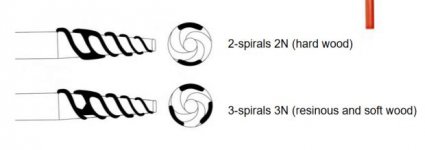Bendak
Aluminum
- Joined
- Aug 26, 2017
Hi,
I am new to CNC machining and was wondering if it would be possible to drill a 0.256" diameter by either a 16+" or up to 30+" hole through M2 or A2 HSS tool steel. My goal is to make a large increment tree borer. I have attached pictures and a link to a PDF showing dimensions of this tool. The threads contain cams to further complicate the process of machining.
http://imlafrica.com/Anleitung_Zuwachsbohrer_eng_02-2009.pdf (Schematics on pages 3 and 4)
Thanks for the help,
Jack
I am new to CNC machining and was wondering if it would be possible to drill a 0.256" diameter by either a 16+" or up to 30+" hole through M2 or A2 HSS tool steel. My goal is to make a large increment tree borer. I have attached pictures and a link to a PDF showing dimensions of this tool. The threads contain cams to further complicate the process of machining.
http://imlafrica.com/Anleitung_Zuwachsbohrer_eng_02-2009.pdf (Schematics on pages 3 and 4)
Thanks for the help,
Jack








